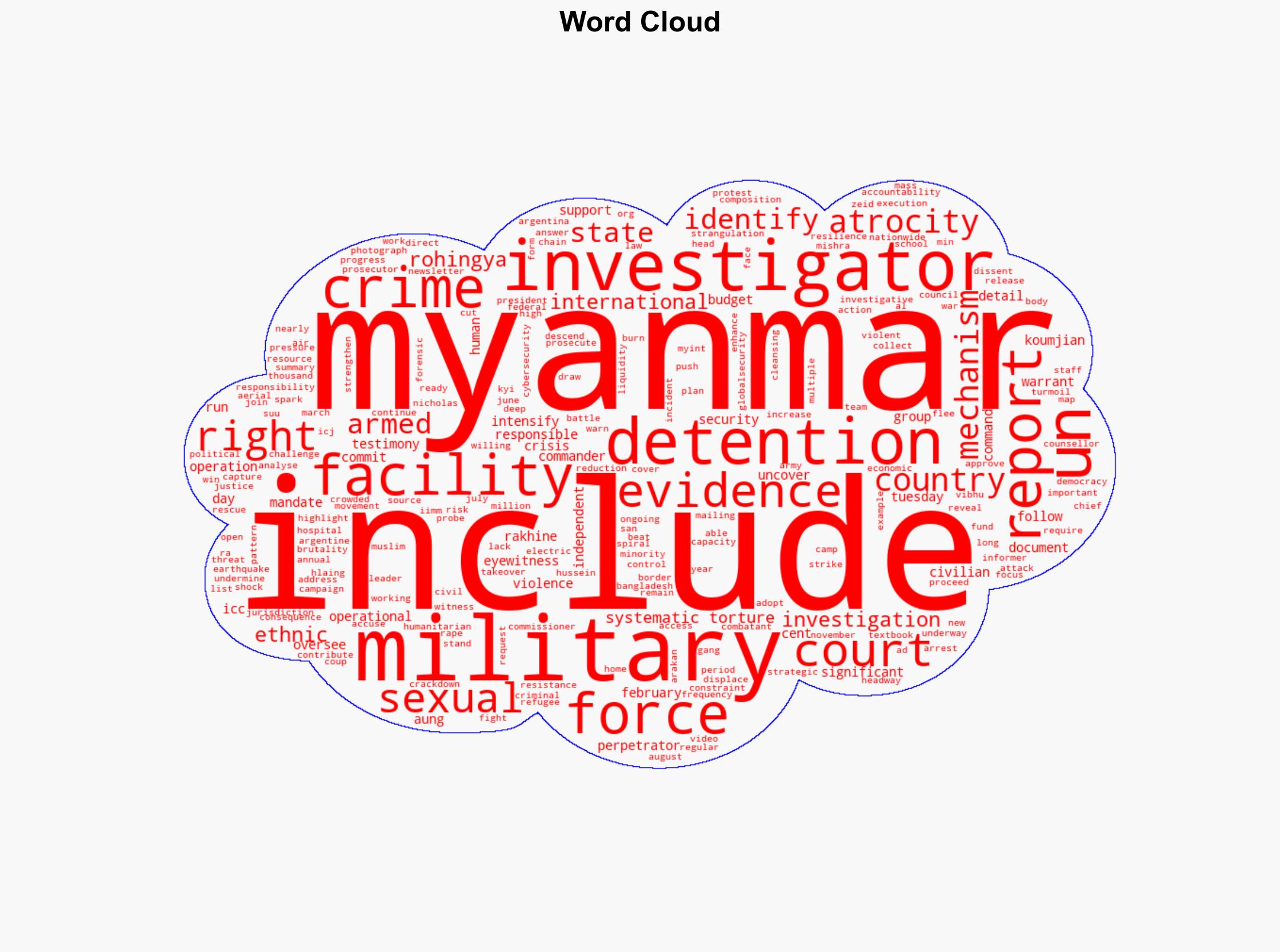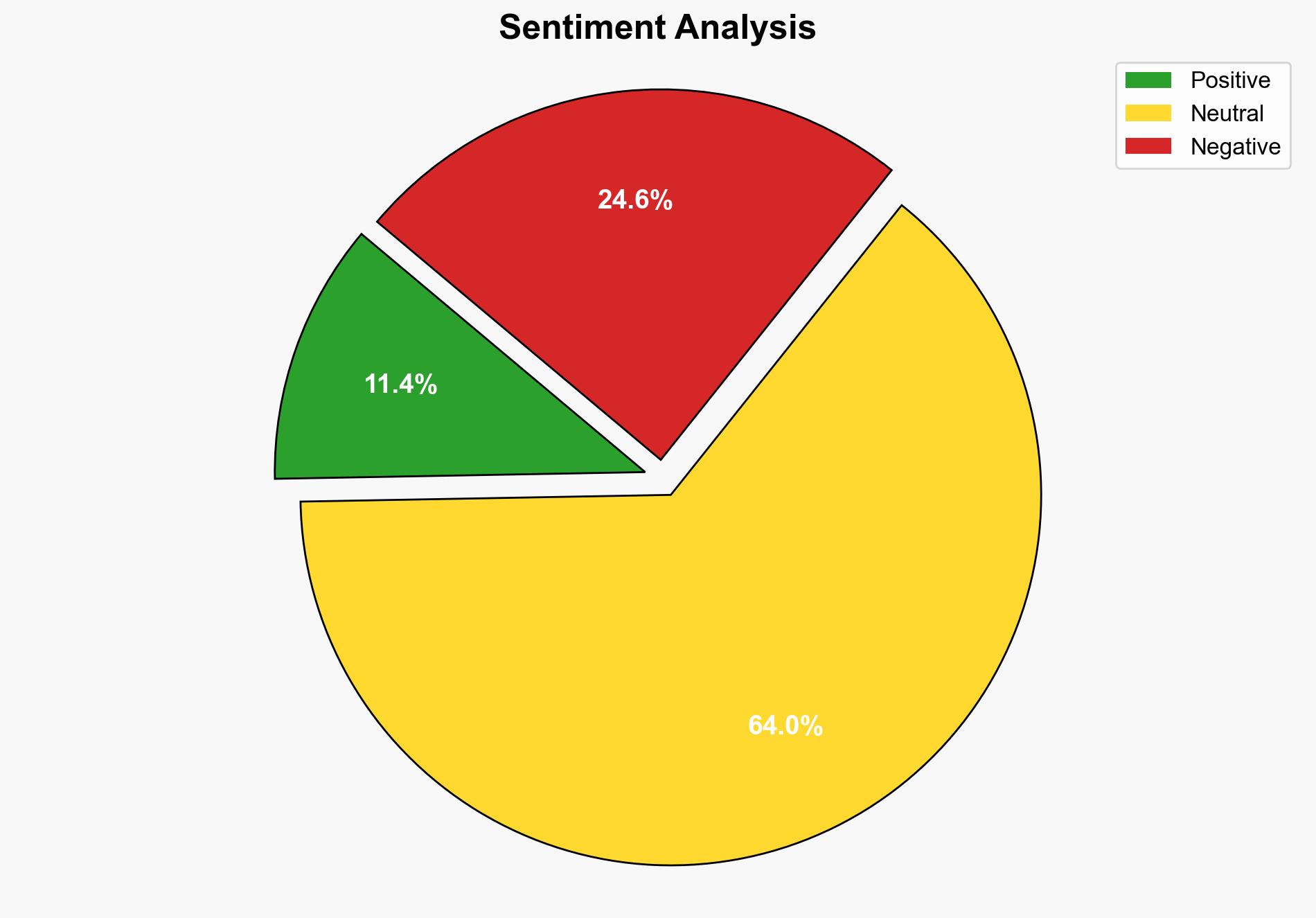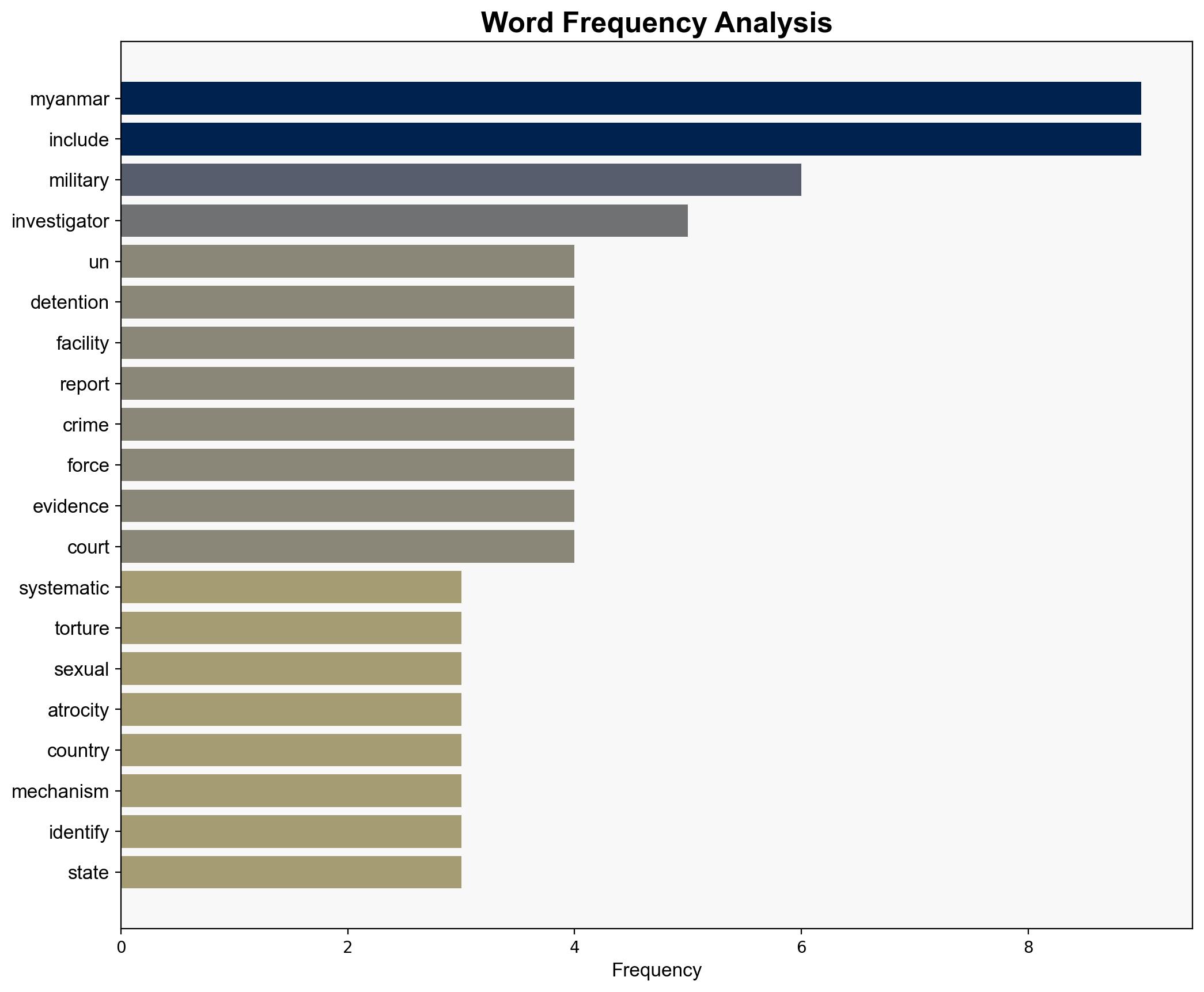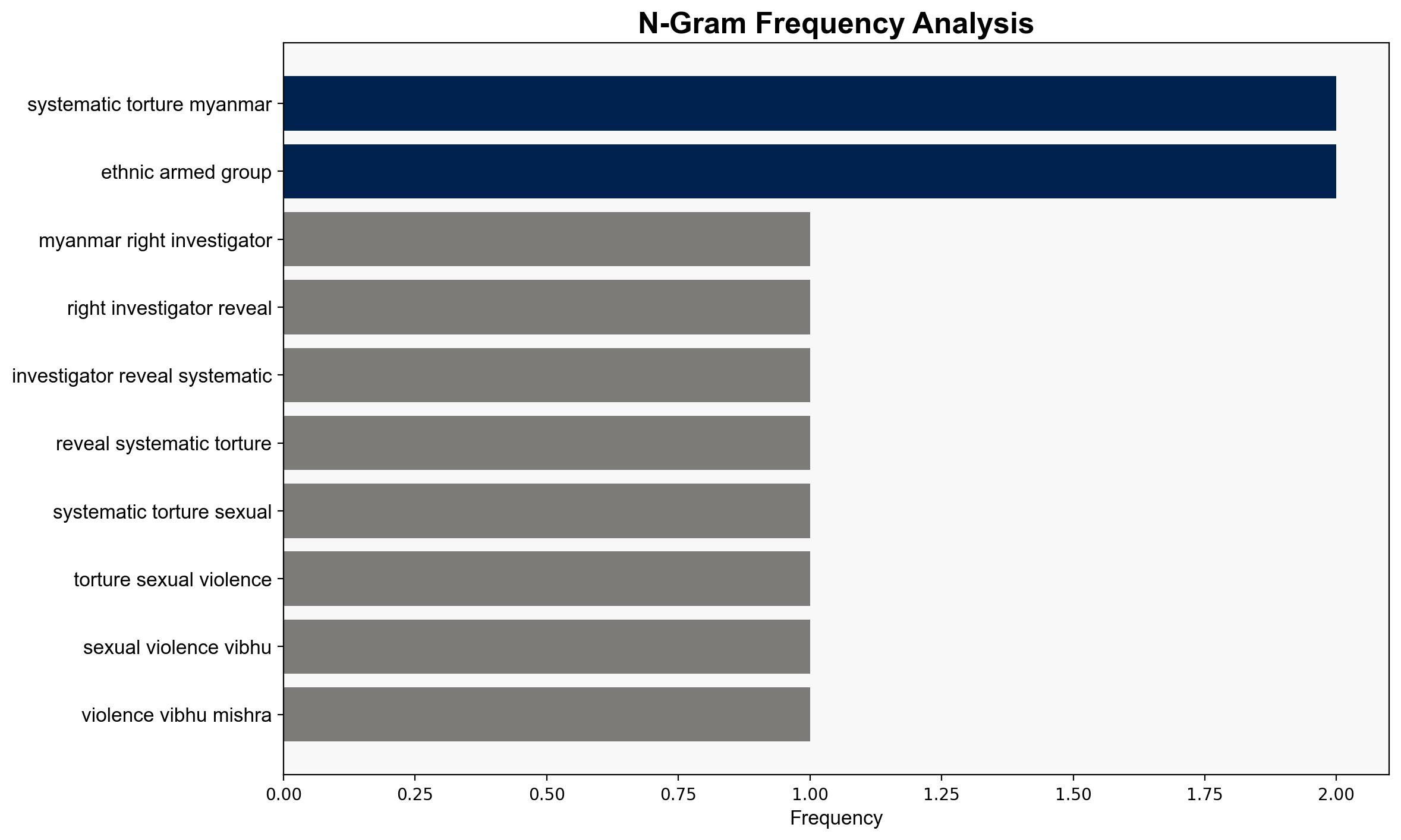Myanmar Rights investigators reveal ‘systematic torture’ sexual violence – Globalsecurity.org
Published on: 2025-08-13
Intelligence Report: Myanmar Rights investigators reveal ‘systematic torture’ sexual violence – Globalsecurity.org
1. BLUF (Bottom Line Up Front)
The most supported hypothesis is that the Myanmar military is systematically employing torture and sexual violence as tools of repression against dissent and ethnic minorities. This conclusion is drawn from corroborated eyewitness testimonies and documented evidence. Confidence level: High. Recommended action: Increase international pressure on Myanmar’s military regime through sanctions and support for international judicial proceedings.
2. Competing Hypotheses
1. **Hypothesis A**: The Myanmar military is systematically using torture and sexual violence as a deliberate strategy to suppress dissent and control ethnic minorities.
– Supported by extensive eyewitness testimonies, photographic evidence, and documented patterns of abuse.
– Consistent with historical patterns of military behavior in Myanmar.
2. **Hypothesis B**: The reported abuses are isolated incidents, not indicative of a systematic policy by the Myanmar military.
– Less supported due to the breadth and consistency of the evidence presented.
– Requires assuming significant discrepancies in the reporting and documentation process.
3. Key Assumptions and Red Flags
– **Assumptions**:
– The integrity and reliability of eyewitness testimonies and documented evidence.
– The Myanmar military’s historical patterns of behavior are indicative of current practices.
– **Red Flags**:
– Potential bias in reporting due to political motivations.
– Lack of direct access to witnesses and sites due to security constraints, which could affect evidence collection.
– **Blind Spots**:
– Limited information on internal military communications and orders.
– Potential underreporting due to fear of reprisal among witnesses.
4. Implications and Strategic Risks
– **Patterns**: The systematic use of violence suggests a deliberate strategy by the military to maintain control, which could lead to further international isolation and sanctions.
– **Cascading Threats**: Continued abuses may fuel armed resistance, leading to prolonged conflict and regional instability.
– **Potential Escalation**: Increased international scrutiny could provoke retaliatory actions by the military, worsening the humanitarian crisis.
– **Geopolitical Dimensions**: The situation may strain Myanmar’s relations with neighboring countries and international bodies, impacting regional security dynamics.
5. Recommendations and Outlook
- **Mitigate Risks**: Advocate for increased international sanctions targeting Myanmar’s military leadership and entities supporting their operations.
- **Exploit Opportunities**: Support international legal actions, such as ICC and ICJ proceedings, to hold perpetrators accountable.
- **Scenario-Based Projections**:
– **Best Case**: International pressure leads to a negotiated settlement and reduction in human rights abuses.
– **Worst Case**: Escalation of violence and further entrenchment of military rule, leading to regional instability.
– **Most Likely**: Continued international condemnation with limited immediate impact on military behavior, necessitating long-term strategic engagement.
6. Key Individuals and Entities
– Min Aung Hlaing
– Nicholas Koumjian
– Vibhu Mishra
7. Thematic Tags
national security threats, human rights violations, regional instability, international law, military repression




